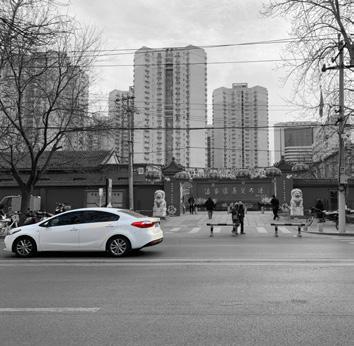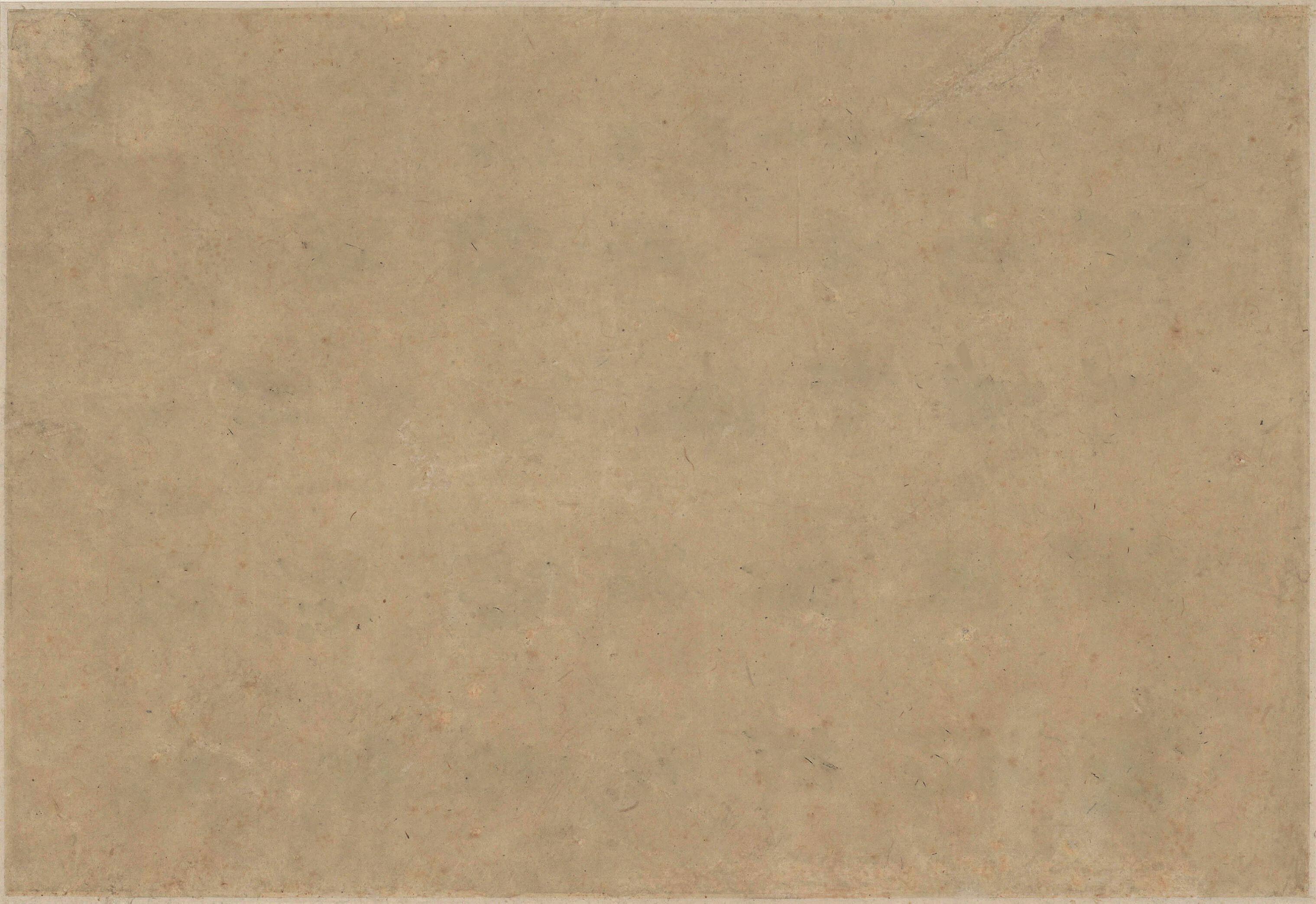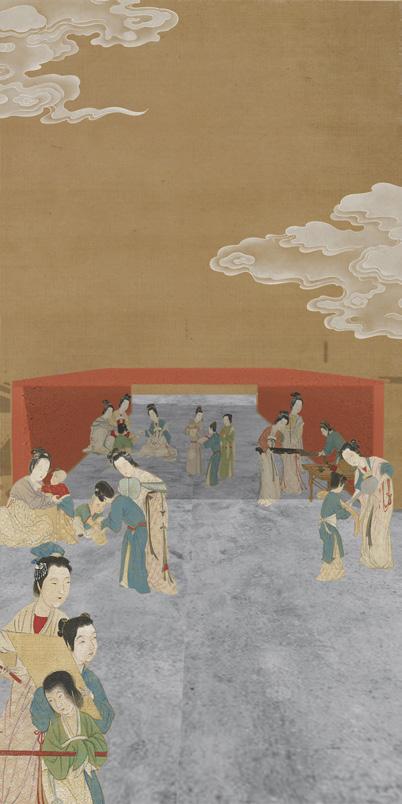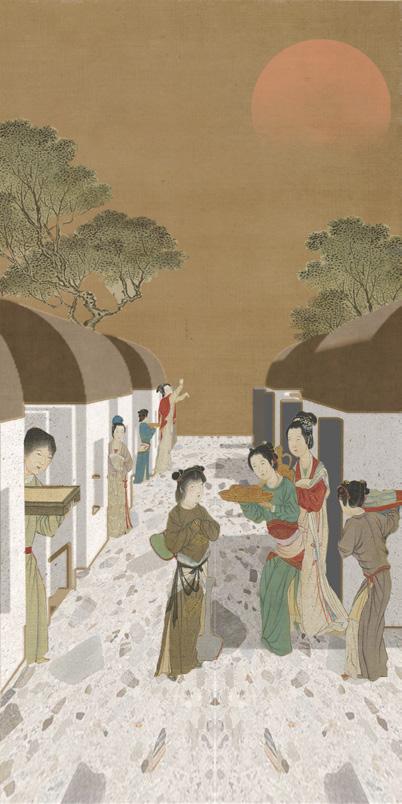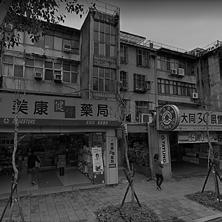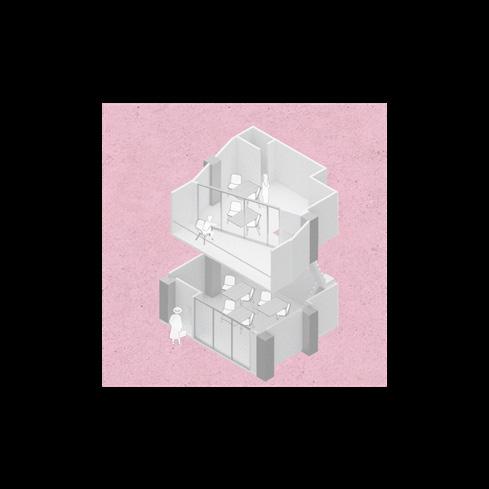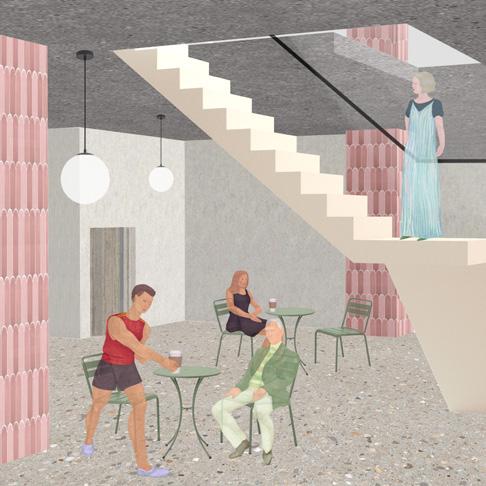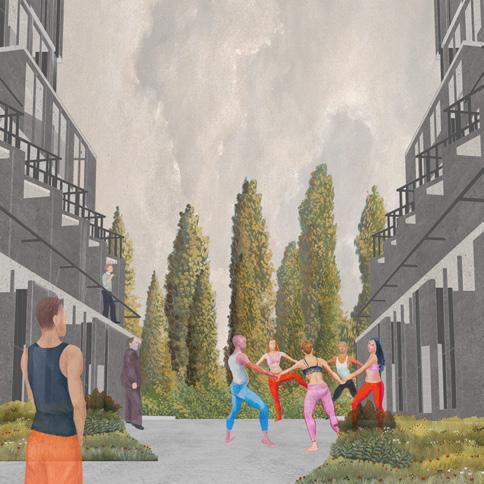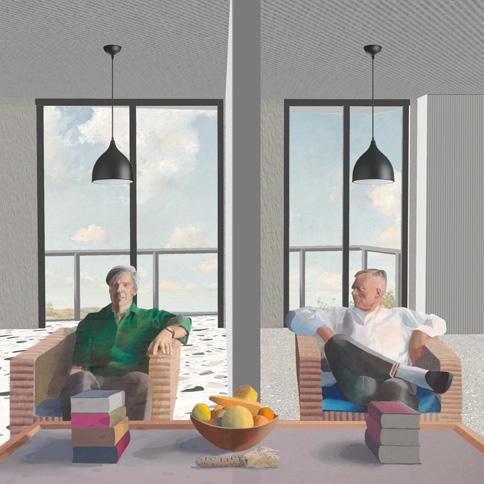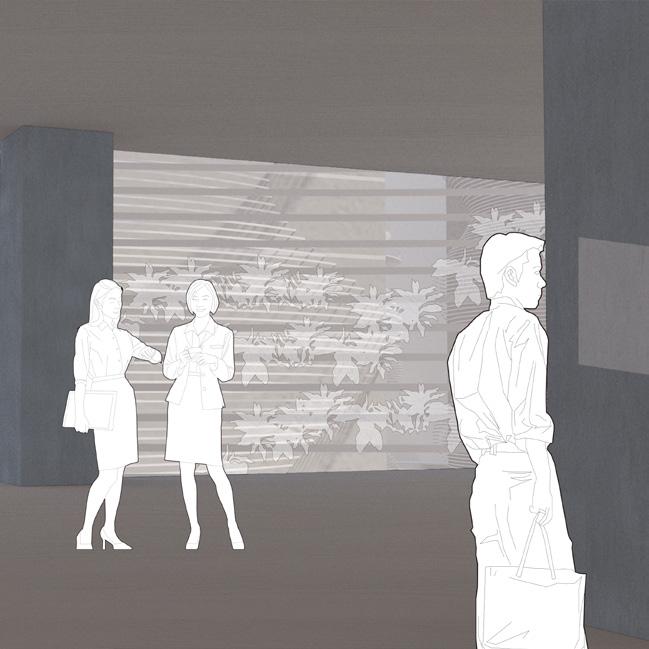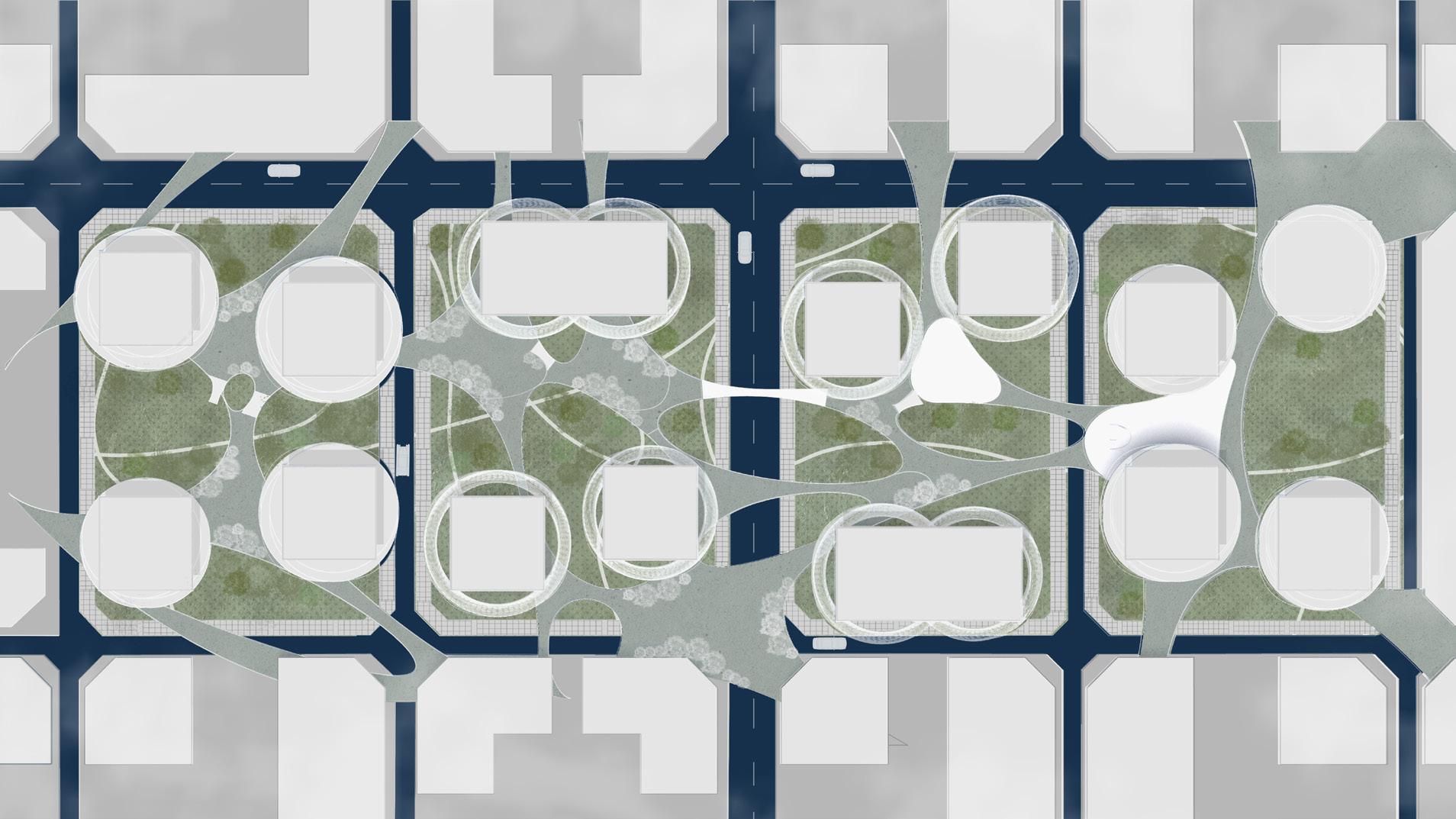Real and Fake
Creating a treasure-hunting experience in a historic flea market.
Site: Beijing, China / Category: Academic Work / Individual Work / 2019.10-2020.05 / Tutor: Eddie-Kao
Beijing's Panjiayuan, once renowned as the "Ghost Market," is a popular tourist attraction where buyers and sellers traded anonymously at night, searching for hidden treasures with lanterns. While some found valuable items, others ended up with counterfeits. This thrilling experience has faded over time, leading to a decline in visitors and a shift to an ordinary flea market.
To revive its spirit, the concept of the Ghost Market will be reintroduced, blending exhibition and production elements to create ambiguity around the origins and authenticity of goods. By connecting various shops and stalls, the market will rekindle the excitement of treasure hunting.
After analyzing vendor transportation needs and tourist movement, several routes with slopes and stairways have been mapped out to enhance the visitor experience and ensure smooth access for vendors. Different zones will host activities like auctions, treasure hunts, and production demonstrations, adding complexity and blurring perceptions of value. This transformation will make the treasure-hunting experience more challenging and exciting, evolving the antique market into a dynamic, immersive environment.
Come back with a full harvest!
There are so many shops here, where should I start?
Do you think this is a genuine product or a counterfeit?
It is very easy for other vendors and collectors from outside the city to reach this place after arriving by train. Moreover, the surrounding vehicular traffic is also very convenient.
Where should set up my stall today?
I'm late, everyone has already started.
So heavy!
Has the market started?
HISTORY
In 1985, an illegal antique market emerged on Xianglai Street, west of Xuanwumen, Beijing. Frequent raids by cultural relics authorities forced the market to relocate multiple times.
Can I successfully find treasure today?
The distance from home to the market is really far
I must be the earliest one here to hunt for treasures!
Commuting every day is so exhausting!
The subway is so crowded!
Panjiayuan's predecessor was a market known as the 'Ghost Market.' In the mid-to-late Qing Dynasty, Beijing spontaneously formed 'Ghost Markets,' which would gather for selling before dawn when it was still dark and disperse at sunrise.
After renovations in 2000, Panjiayuan became a major attraction in Beijing. For foreign tourists, visiting the Great Wall, eating roast duck, touring the Forbidden City, and shopping at Panjiayuan became essential activities when traveling to China.
In Panjiayuan, the transportation items often involve large objects. Trucks usually enter the parking area from the western entrance to unload goods into the market. The single vehicle entrance frequently leads to congestion problems.
In 1996, a simple wall and cement stalls were constructed shaping the current layout of the market
In 1987, inspections closed many second-hand markets in Beijing, forcing vendors to relocate near Huawei Bridge.
Until 1995, Panjiayuan operated in a dispersed and unregulated manner. As economic interests attracted more vendors, authorities invested in building a market, organizing the stalls, and officially naming it the 'Panjiayuan Flea Market.'
vendors, and it is also the main entrance for customers during the night market. Located between Beijing's Second and Third Ring Roads,
and
Panjiayuan is easily accessible, with vendors from Tianjin and Hebei often using the convenient Jingjintang Expressway.
TYPE 1
Incorporating production and exhibition routes helps tourists understand product value and enhance appreciation skills.
Consumers
A grand staircase integrated into the visitor path enables auctions or treasure-hunting activities.
02
Co-Living Co-Create
Propose a new intergenerational co-housing model combining work and living.
Site: Taipei, Taiwan / Category: Academic Work / Individual Work / 2019.02-2019.09 / Tutor: Jiahong-Xu
The site is located in Minsheng Community, Taipei, one The site is in Minsheng Community, Taipei, one of Taiwan's first areas to adopt American-style urban planning. In the 1960s, it housed many educators and civil servants and was considered an ideal neighborhood. Its design featured neighborhood units with abundant greenery and open spaces. However, as residents aged and moved away, the community now faces challenges, including aging housing without elevators and other infrastructural issues.
The design process first focused on the aging population, leading to the concept of intergenerational co-housing, where both elderly and young residents live together, providing mutual care and support. This inclusion revitalizes the neighborhood with fresh energy.
The ground level incorporates restaurants and studios, offering simple jobs for the elderly and space for young entrepreneurs. Shared public spaces facilitate exchanges of experiences and ideas between generations. The exterior breaks from traditional monotonous façades, with numerous balconies for residents to express creativity and personalize their spaces. The stepped design enhances the living experience by allowing sunlight and views of the open sky.
Residential areas need a certain amount of outdoor recreational space and green areas. Utilize the remaining space within the site to connect with the green areas in other sites.
There are various types of transportation near the site, often leading to traffic issues on the main roads. Lack of parking space.
Clarence Perry proposed the Neighborhood Unit Planning Theory.
Songshan Airport was established along with the third runway constructed by the Japanese military.
During the Japanese colonial period, this side of the riverbank was Indigenous farmland.
Public facilities / Clothes drying area / Design the balcony to enhance the facade, avoid using it for drying clothes, and establish a unified drying area.
The core concept of intergenerational co-living is that older adults provide available living space, while young people offer companionship services.
In addition to individual living units, other spaces are designed to strongly focus on the concept of sharing, with nearly half of the building dedicated to communal areas. This design encourages elderly residents to gather and increases interaction among them.
It is important to strengthen the concept of a neighborhood unit in this area and to integrate it practically into the daily lives of the residents.
An important aspect of the intergenerational co-living concept is the unit-based living arrangement, which offers numerous communal areas while ensuring that the basic amenities in individual rooms are not shared. This creates a clear distinction between public and private spaces.
Broadly speaking, intergenerational co-living can refer to a community where both seniors and young people live together, providing mutual care and support.
Provide a space for young entrepreneurs starting new businesses and offer job opportunities for seniors re-entering the workforce. The value of bringing together young and elderly people lies in the exchange of knowledge and experience.
Urban Node
Creating a New Lifestyle in an Old Urban Area.
Site: Taichung, Taiwan / Category: Academic Work / Group work(Group of two, responsible for drawings, analysis, and part of the model.)
2018.02-2018.09 / Tutor:Ana Ilić
In the central city of Taiwan—Taichung—there is a district In Taichung’s Central District, one of the city's earliest developed areas, narrow streets and one-way roads from early urban planning have contributed to its decline over the past century. Once a vibrant hub during the Japanese colonial period, the area now faces challenges as residents have moved out and its functionality has diminished. The question arises: Can urban design and architectural renewal restore its former glory?
A study of the district revealed that its complex functional distribution contributed to its decline. To address this, functions were redistributed, and an elevated greenbelt was introduced to connect various zones, transforming the district into a potential future city center. This approach aims to modernize its appearance and unlock growth.
With an influx of foreign migrant workers and emerging job opportunities, there is a growing need for suitable workspaces and housing. Balanced distribution of commercial and residential areas is crucial to accommodate returning residents and enhance living experiences. The greenbelt connects parks, re-establishing the link between people and outdoor spaces, while separating pedestrian and vehicular traffic to ease congestion.
SCENE DIAGRAM
I want a space for rest. I want a living space. I want office space.
SHAPE DEVELOPING

























